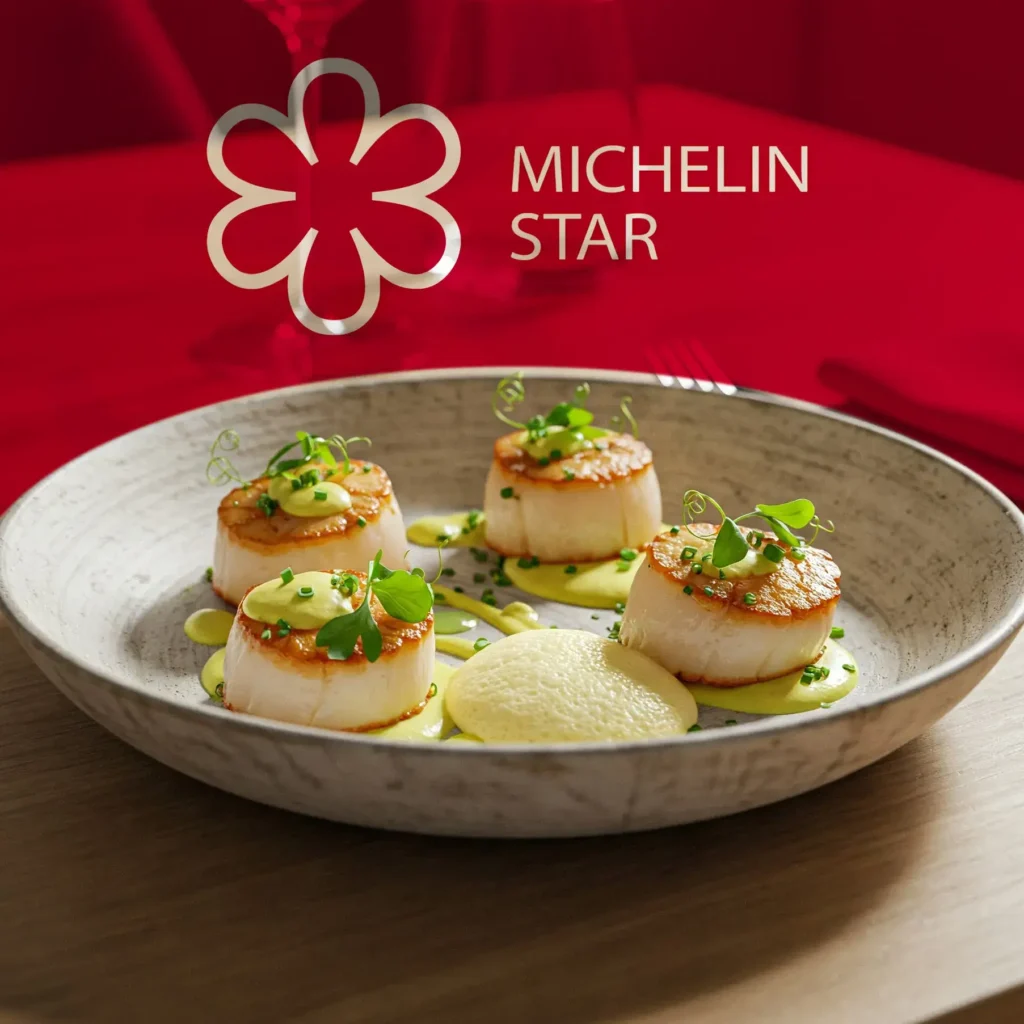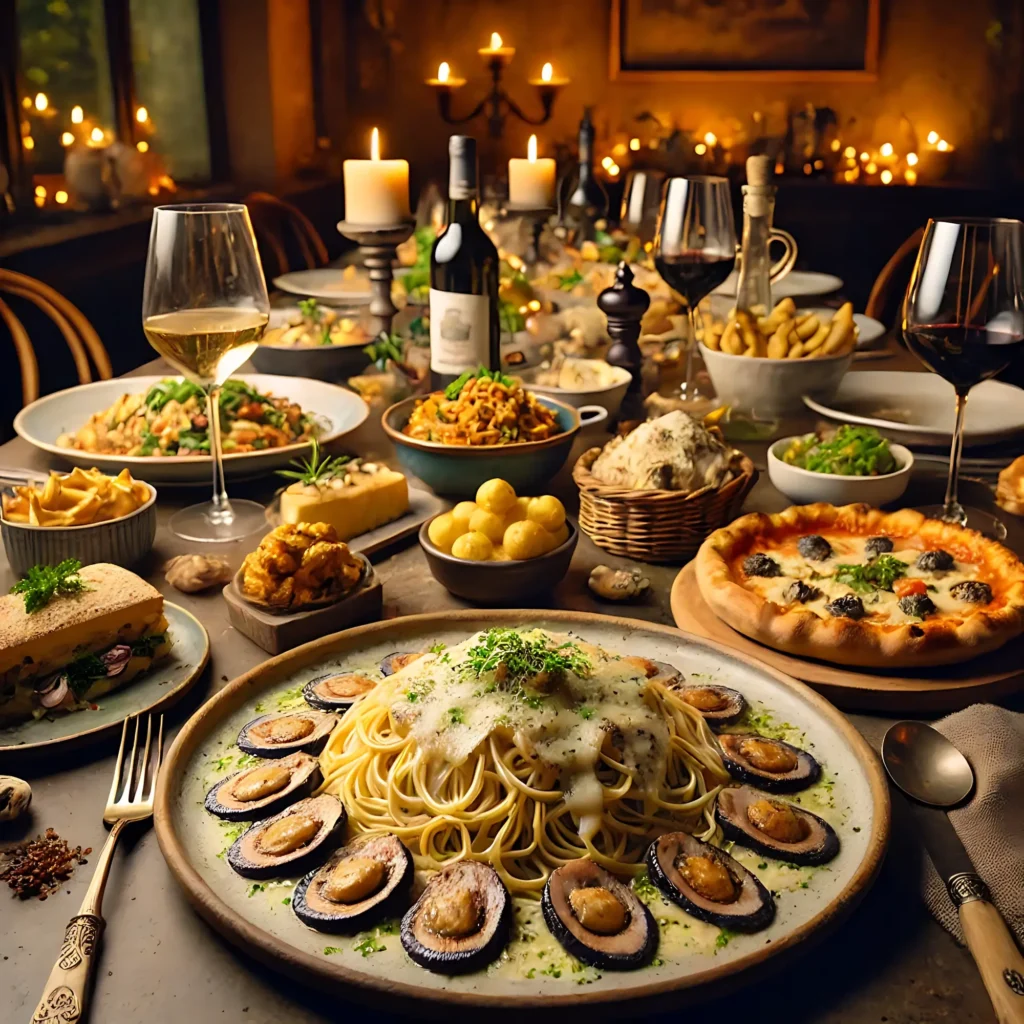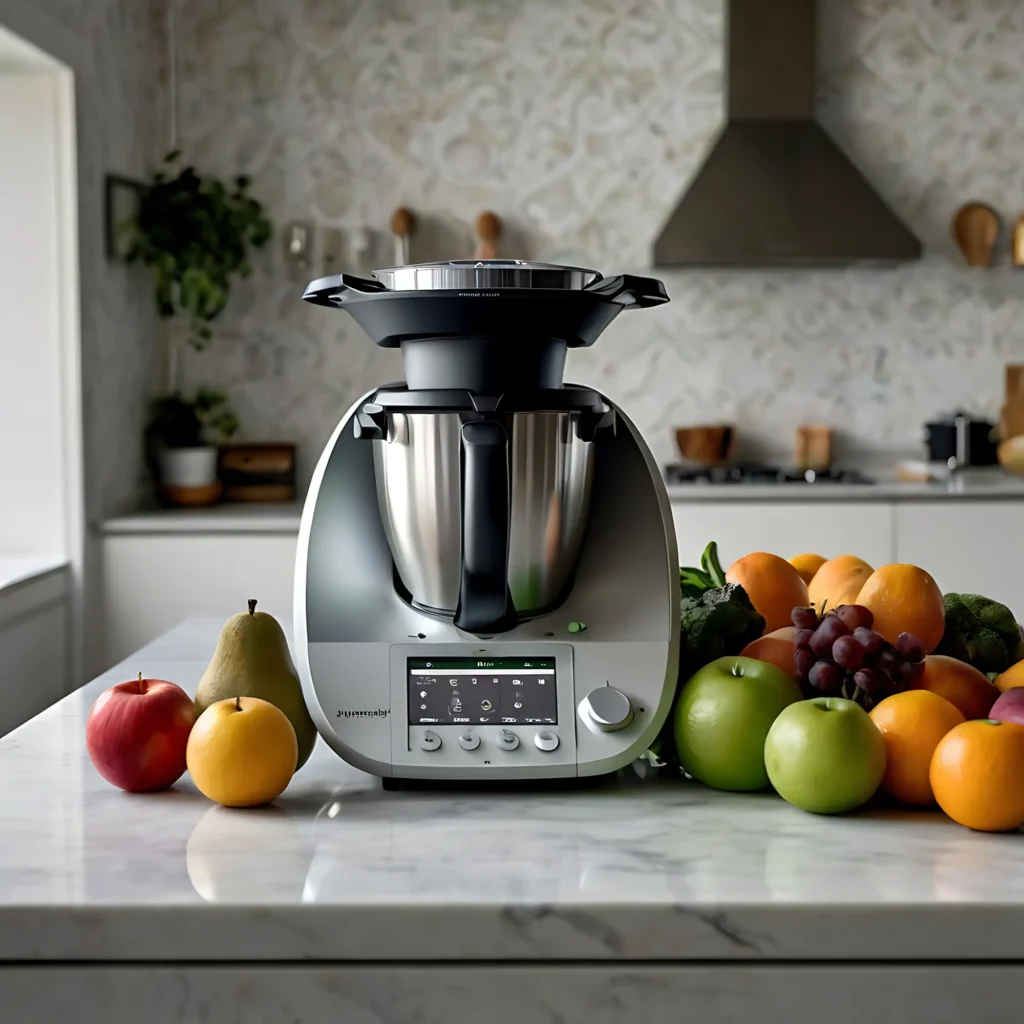In the vast and competitive world of gastronomy, there are certain lights that guide guests, and professionals to the culinary excellence. Among these, the Michelin Stars you shine with a special intensity, representing a classification system recognized globally as a synonym for quality, innovation and an exceptional dining experience. But, what they really mean these coveted stars? How is it made and why they exert such influence on the world of the restoration? In this extensive article, desentrañaremos the mystery surrounding the Michelin Starsexploring its history, methodology, and its unrivalled impact on haute cuisine.
Humble origins, Global Impact: The History of the Michelin Stars
To understand the contemporary relevance of the Michelin Stars, it is essential to go back to its origins. Far from the sophistication and glamour that today characterize, the Michelin Guide was born in 1900 as a practical tool for motorists French. André and Édouard Michelin, to the visionary brothers, founders of the famous company of tires, sought to promote the automobile tourism and, therefore, the use of their tires. The first guide, free of charge, containing useful information for drivers: maps, listings of mechanical, gas stations, and, in a tentative way, recommendations of places to eat and stay.
With the passage of time, the restaurants section was gaining popularity and extension. In 1926, the guide began to award its first star, initially a single, to the establishments of "haute cuisine". The demand and the interest grew exponentially, leading to the introduction of the system of three stars in the 1930s, the structure that remains until our days. This system, refined and perfected over decades, has become the gold standard of the cuisine world, transcending its humble origin as a promotional brochure for tires.
The Secret Process: Anonymous Inspectors and Rigorous Criteria
One of the fundamental pillars of the credibility and prestige of the Michelin Stars lies in its rigorous and opaque system of evaluation. Unlike other guides or rankings delicacies that are based on popular votes or panels public, Michelin employs anonymous inspectors, full-time employees that act as clients in common. These inspectors, with different profiles and a training culinary exhaustive, visit and assess restaurants independently, without prior notice and paying your own bills. This anonymity guarantees an authentic experience and eliminates any possibility of preferential treatment or bias.
The evaluation criteria of the Michelin Stars remain largely confidential, but the guide has revealed five key pillars that guide the decisions of the inspectors:
Quality of the products
Assessing the freshness, seasonality and the excellence of the ingredients used in each dish. The provenance and sustainability of the products are becoming more and more relevant.
Domain of the culinary techniques
Inspectors assess the mastery of the chef and his team in the application of cooking techniques, from the most classic to the most innovative. We search for the accuracy, impeccable execution and the ability to transform ingredients into culinary creations, exceptional.
Harmony of flavors
The complexity, balance and intensity of flavors are crucial aspects. Looking for a dining experience a memorable one, where the ingredients complement each other and enhance each other.
Personality of the chef reflected in the kitchen
The Michelin Stars not only reward the technology, but also the creativity and vision of chef. It assesses the ability to print a personal seal, a unique style and recognizable in each dish, conveying a story or a philosophy through the food.
Consistency between visits and integrity of the letter
The guide requires consistency in the quality and level of excellence throughout time and in all the dishes on the menu. Evaluates the ability of the restaurant to maintain a high standard at each visit by the inspector.
It is important to highlight that the decor of the restaurant, the service, or comfort, although valued, not directly influence the obtaining of Michelin Stars. These aspects are evaluated through other distinctions, such as the "Bib Gourmand" or "The Plate Michelin", which recognize restaurants with an excellent relation quality-price or quality cuisine, respectively. The Michelin Stars focus exclusively on the experience of the dish.
One, Two, Three Stars, The Hierarchy of Excellence
The system Michelin Stars it is based on a hierarchy of one to three stars, each level representing an increasing degree of culinary excellence and a justification for performing a gastronomic journey.
A Michelin Star
"A magnificent cuisine. It is worth the detour!" Recognises restaurants that offer a high-quality cuisine, using excellent ingredients and applying techniques culinary highlights. A Michelin-starred restaurant is a culinary destination valuable by itself, offering superior culinary experiences.
Two Michelin Stars
"Excellent cuisine. It is worth the detour!" Are awarded to restaurants that offer exceptional cuisine, with a personality and a talent evident in the dishes. The dining experience at a restaurant two Michelin stars justified to perform a significant departure on a trip, promising to moments of culinary memorable.
Three Michelin Stars
"Exceptional cuisine. It justifies the trip!" The highest distinction, reserved for restaurants that offer exceptional cuisine, rising to the rank of art. These establishments propose dining experiences unique, with dishes that can rub against the perfection, impeccable service and an atmosphere of sublime. A restaurant of three-star Michelin justifies a trip specifically to enjoy the cuisine, representing the pinnacle of culinary excellence at a global level.
The acquisition or loss of Michelin Stars has a significant impact on the reputation and success of a restaurant. Earn stars can catapult an establishment to international fame, attracting diners from all over the world and generating a significant increase in bookings and revenues. On the contrary, losing stars can be a devastating blow, affecting the morale of the team, the perception of the public and, in some cases, the economic viability of the restaurant. The pressure to maintain and achieve the Michelin Stars it is immense, driving to the chefs and their teams to the constant innovation and the pursuit of perfection.
Beyond the Stars: Other Distinctions Michelin
While the Michelin Stars are the distinction most celebrated and coveted, the Michelin Guide also awards other awards that broaden your reach and cover different aspects of the cuisine.
Bib Gourmand
This distinction, represented by the figure of Bibendum, the famous doll Michelin-recognized restaurants that offer a "quality cuisine at moderate prices". The Bib Gourmand are an excellent option for those looking to enjoy a dining experience remarkable without paying the high prices associated to the restaurants with stars. These establishments are often noted for their authenticity, their home cooking and its excellent quality-price ratio.
The Plate Michelin (Le Assiette Michelin)
Introduced more recently, this distinction recognizes simply "restaurants that offer good food". Represents a level of quality higher than average, although it does not reach the excellence of the Bib Gourmand, or restaurants with stars. The Plate Michelin is a helpful guide to identify establishments with a kitchen neat and tasty, ideal for the day-to-day or to discover new talents.
Green Star Michelin
In line with the growing environmental concerns and sustainability, the Michelin Guide has introduced the Green Star in the Michelin guide. This award recognizes restaurants that stand out for their commitment to sustainable gastronomy. Evaluate aspects such as the origin of the products, reducing the waste of food, energy efficiency and environmental practices in general. The Green Star Michelin reflects the growing importance of sustainability in haute cuisine, and rewards restaurants that are leading this movement.
These distinctions further expand the spectrum of recommendations from the Michelin Guide, offering options for different budgets and preferences, and recognizing the diversity and the evolution of the contemporary dining scene.
The Impact of the Michelin Stars in the Gastronomy World
The influence of the Michelin Stars in the gastronomy world is undeniable. Beyond the mere classification of restaurants, the stars have shaped the industry, driving innovation, raising the standards of quality and transforming the perception of cooking as an art form.
Boosting innovation and creativity
The search for the Michelin Stars encourages chefs to exceed the limits of the culinary creativity, to experiment with new techniques, ingredients, and presentations. The competition for the stars fosters the innovation and constant evolution of the cuisine, benefiting the entire industry and, ultimately, to the guests.
Elevation of the standards of quality
To achieve and maintain the Michelin Starsrestaurants must comply with quality standards extremely high in all aspects, from the selection of ingredients to the service room. This requirement translates into an overall improvement of the quality in the industry, raising the bar for all establishments.
Recognition and projection international
The Michelin Stars give global recognition to the restaurants and chefs that get them. This prestige facilitates the international reputation, attracting customers from all over the world and opening doors to new career opportunities and business. The Michelin stars are a seal of quality is universally recognized.
Development of gastronomic tourism
The Michelin Guide and its Michelin Stars have contributed significantly to the development of gastronomic tourism. Many travelers plan their trips around food, choosing destinations in function of the concentration of Michelin-starred restaurants. The stars have become an economic engine for regions and countries with a strong presence of food.
Inspiration for new generations of chefs
The success stories of chefs Michelin Stars inspire new generations of chefs to pursue excellence and to dream of reaching the top of the food. The stars act as a lighthouse, guiding and encouraging young talents to develop their skills and to contribute to the evolution of the culinary arts.
Criticism and Controversies Surrounding the Michelin Stars
Despite its undisputed prestige and its positive impact on the cuisine, the Michelin Stars are not exempt from criticism and controversies. Some critics have questioned the methodology of the evaluation, the opacity of the process and the undue influence that the guide exercises in the industry.
The opacity of the process and lack of transparency
The confidentiality of the evaluation process and the lack of communication detailed on the specific criteria generated criticism over the transparency of the guide. Some chefs and critics seeking greater clarity and openness in the process of evaluation.
Undue influence and pressure on the chefs
The power exercised by the Michelin Stars you can generate excessive pressure on the chefs and their teams, leading them to prioritize search of stars above other aspects, such as sustainability, creativity, personal or mental health. The obsession with the stars may, in some cases, be counterproductive.
Evaluation criteria potentially biased or outdated
Some critics argue that the criteria of evaluation of the Michelin Guide may be biased toward a kind of kitchen-classic and formal, neglecting other forms of culinary expression more contemporary, informal or innovative. There is also debate if the criteria are sufficiently adapted to the evolution of the culinary trends and new sensitivities, such as sustainability and cultural diversity.
Economic and social impact desigual
While the Michelin Stars drive the gastronomic tourism and benefit certain restaurants, they can also generate inequalities in the industry. The concentration of stars in certain regions or in establishments of high-end you can leave out to restaurants more modest or cook less represented in the guide.
These criticisms and controversies are part of the ongoing debate around the Michelin Stars. However, even the harshest critics recognize the importance of the guide as a benchmark of quality and contribution to the development of world gastronomy.
Spain and the Michelin Stars: A Reference in the Gastronomic World
Spain has established itself as a power gastronomic world, and the Michelin Stars they are a clear reflection of this reality. With a growing number of award-winning restaurants, Spain is at the forefront of haute cuisine, attracting diners from all over the world and projecting an image of culinary excellence at the international level.
The Spanish cuisine, rich in tradition, and innovation, has won the recognition from the Michelin Guide, which has been awarded numerous Michelin Stars restaurants across the country. From the avant-garde cuisine of Ferran Adrià at El Bulli (closed in 2011), up to the creativity of chefs Joan Roca (El Celler de Can Roca), Andoni Luis Aduriz (Mugaritz), or Angel León (Aponiente), Spain has been the cradle of talent and culinary concepts, innovative that have marked trend at the global level.
The diversity of the Spanish geography, the wealth of its products and the passion for gastronomy and its people have contributed to this success. From the mediterranean cuisine to the atlantic, passing through the kitchen of the interior and the influences of other cultures, the Spanish cuisine offers a palette of flavors and experiences unparalleled. The Michelin Stars in Spain not only reward individual excellence of the restaurants, but also recognize the richness and vitality of the culture of Spanish cuisine on a whole.
Tips to Enjoy an Experience Michelin Unforgettable
Enjoy an experience in a restaurant with Michelin Stars it is a unique opportunity to enjoy the haute cuisine and live moments of gastronomic memorable. To make the most of this experience, it is important to bear in mind a few practical tips:
Book in advance
Restaurants Michelin Stars, especially the most renowned, tend to have a high demand and require booking far in advance, in some cases months in advance. Planning ahead is essential to ensure a table.
Investigates the restaurant and its proposal
Before you book, investigates the restaurant, his style of cooking, the chef and the views of other diners. Make sure that the gastronomic proposal is adjusted to your tastes, and expectations.
Considered the tasting menu
Many restaurants with Michelin Stars offer tasting menus that allow you to experience a broad representation of the chef's kitchen and discover your creativity. If you are willing to invest in a complete experience, the tasting menu is a great option.
Get ready for a formal setting but relaxed
While the restaurants with Michelin Stars they usually have a formal atmosphere and elegant, the atmosphere must also be relaxed and cozy. Don't feel intimidated, just enjoy the experience and let yourself be guided by the staff.
Do not hesitate to ask and ask for recommendations
The staff in the restaurants Michelin Stars is highly trained to provide exceptional service, and to guide you through the experience. Do not hesitate to ask about the dishes, ingredients, or the recommendations of food and wine matching. Take advantage of your knowledge, to enrich your experience.
Consider the budget
The experiences at restaurants with Michelin Stars they usually have a high cost. Set your budget and choose a restaurant that is fit to your possibilities. Remember that there are options for different budgets, from restaurants with a star, Bib Gourmand.
Enjoy the moment
The most important thing is to relax, open your senses and enjoy every dish, every taste, every detail. An experience in a restaurant with Michelin Stars it is a gift for the senses and an opportunity to celebrate the gastronomy in its maximum expression.
The Future of the Michelin Stars in the world of Gastronomy Moderna
The Michelin Starswith more than a century of history, have shown a remarkable ability to adapt to changes and new trends in gastronomy. In the future, it is likely that the guide continues to evolve and adjusting your criteria to reflect the transformations of the landscape of the culinary world.
Increased focus on sustainability
The concern for sustainability and the environment is a growing trend in all areas, including cuisine. It is likely that the Michelin Guide to increase its focus on this aspect, giving greater importance to the sustainable practices of the restaurants, such as the use of local and seasonal products, reducing waste of food and energy efficiency. The Green Star Michelin could gain even more relevance in the future.
Diversification of kitchen styles, and formats of a restaurant
The gastronomy moderna is characterized by a greater diversity of cooking styles and formats of a restaurant. From the highly traditional to the kitchen a more informal and creative, the guide must continue to adapt to this diversity, recognizing excellence in different culinary expressions. It is possible that we may see a greater representation of restaurants with innovative concepts and formats that are less conventional.
Adaptation to new technologies and communication channels
The Michelin Guide, who was born in role, has evolved into the digital world and social media. It is likely that this adaptation will continue, with a higher presence in online platforms, mobile applications and social networks, to reach a wider audience and diverse. New technologies could also be used to improve the user experience and to offer more personalized.
Greater dialogue with the culinary community
To maintain its relevance and credibility, the Michelin Guide might seek greater dialogue with the community of cuisine, including chefs, critics, diners, and other actors in the sector. An open and constructive discussion could help to enrich the assessment process and to adapt the guide to the new realities of the world of gastronomy.
Conclusion: The Michelin-starred as a Symbol of Culinary Excellence Durable
The Michelin Stars has transcended its origin as a practical guide for motorists to become a global symbol of culinary excellence. Over more than a century of history, have shaped the restaurant industry, driving innovation, raising the standards of quality and transforming the perception of cooking as an art form.
While they are not exempt from criticisms and controversies, the Michelin Stars remain the classification system most recognized and respected worldwide. Its influence endures, the hope of inspiring chefs, attracting diners and contributing to the development and evolution of the cuisine all across the planet. The Michelin Starsmore than just awards, represent a commitment to excellence, a passion for gastronomy and the constant pursuit of culinary perfection. In a culinary world in constant change, the Michelin Stars continue to shine as a beacon of quality and an essential reference for those seeking culinary experiences more exceptional.


